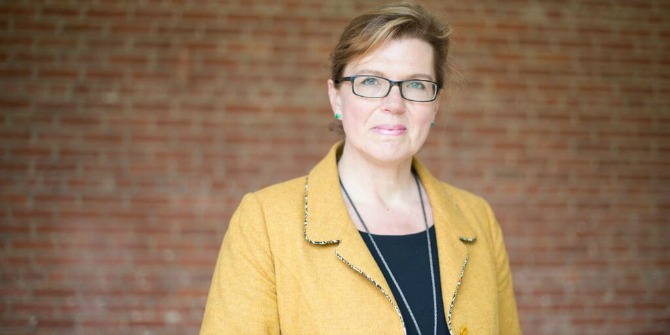
Most of us only embark on change if we can travel in ways that reinforce existing patterns. That’s the paradox. We seek a new what by comfortably using the same how.
In my work assisting leaders navigate large complex transition, I define change as the “disturbance of repeating patterns”. Unless leaders can pay as equal attention to the system-changing process through which they bring in change, as they do to its outcomes, my research has shown that their efforts will be doomed to fail, or, at best, be incredibly irksome and hard work. Leaders and their organisations will get busily acting, yet, not moving to a new place.
I have long been curious about how to lead true change, change that gets to the source of the routines that hold the current system (or department, team, individual) in place. We are often blind to that source – how our own point of perception, or emotional state, is in fact creating the very situation we are trying to change. Too often we think that change is about changing the world outside of us. My latest round of research calls for a radically different and much needed way of leading change, an approach that recognises that all deep movement starts on the inside.
Given the premium that is now placed upon building the capacity to face disruptive change in today’s world, what kind of leadership is required to make change? And, how can this kind of leadership be best cultivated?
Being before doing
I have found that the answer does not lie in more change tool kits and initiatives. We have enough of those “doing change to people” programmes that just seem to overwhelmingly layer on more work. Rather, the answer lies in fostering a different quality of leadership, one that combines both inner and outer skills, and one which starts with a leader’s ability to work on their inner game – their way of being.
The case for “mindfulness” (simply defined as the increased awareness that arises from paying attention, intentionally, in the present moment, and non-judgmentally) has exploded in recent years. Largely with the aim to reduce workplace stress, improve cognitive functioning, build greater empathy, and enhance creativity, there has been no rigorous empirical study into the relationship between mindfulness, change leadership and change outcomes – until now.
To combat the almost mindless take up of mindfulness, in 2015 I led a major global research inquiry spanning five continents. The study examined both the outer practices and the inner capacities required to be a great change leader. In total, from 65 senior leaders across multiple industries, we gleaned 88 in-depth behavioural-event-based stories of change implementation.
Through coding and analysis of the story transcripts we found that a particular combination of leadership qualities is significantly correlated with successful change outcomes. In fact, it explained over 52 per cent of the reason why big change either succeeds or fails. It was rare though to find this precious combination of qualities in any single leader. No wonder so much change fails.
And what’s more, it was the inner state of a leader that made the most difference to change outcomes. Getting into the right place personally explained almost half of the difference between great and poor change leadership.
Leading change requires still moving
Movement first starts in cultivating stillness, and I found that four inner capacities clearly differentiated successful change leadership, a combination of both mindfulness and systemic skills:
- The ability to stay non-judgmentally present and not be distracted – a noticing skill
- The capacity to consciously choose how to respond to experience, and not impulsively react to it – a choosing skill
- An empathic capacity to be able to tune into systemic dynamics (don’t take everything personally!) – a perceiving skill
- And a capacity to acknowledge all that happens (in particular, difficulty) as being necessary for change and transition – an integrating skill
Four external practices (i.e., visible behaviours) also stood out as being essential for successful change leadership (see also my previous publications), and were significantly enhanced by the inner capacities:
- The “attractor” ability to align people behind shared purpose and intention – meaning matters
- The ability to confront reality and amplify disturbance via “edge and tension” – truth is a turn on
- The ability to channel the inevitable anxiety in a change process towards purposeful energy – safety strengthens
- And the ability to spot and change repeating patterns as they happen – we only have the now.
As useful as these individual capabilities are, however, it is when they are put together that the success rate of change increases dramatically.
The top leaders of change in our research were able to put all of these inner and outer skills together. And they were contrasted with the less successful leaders who possessed non-mindful, egocentric, and pace-setting behaviour. We can all “lose it” when under pressure, but great change leaders consciously could put their reactive impulses to one side and play a bigger game. The distinction was clear. Still (inner quality of being) Moving (external quality of doing) leadership is essential for bringing about change in today’s uncertain and turbulent context.
Moreover, this kind of leadership cannot be learned in “offline” training courses and taught leadership development programs. I found it could only be learned through skilful and guided experience-based learning within real-life contexts. This challenges the traditional industry of provider-based leadership development, and suggests that investment for leading change skills development be switched into well-moderated and coached “online” experience.
In summary, leading change successfully today requires a challenging combination of skills, which can only be cultivated in experiential development contexts. Are we up for it?
We only have to look around us to see how the cost of change failure is increasing. We have a world still reeling from the aftermath of its worst global economic recession since World War II, challenged by the continual threat of terrorism, rocked by political upheavals spurred by a growing backlash against economic globalisation and its governing elite, and facing environmental concerns that threaten the survival of the planet. It’s clear that the price of not being able to lead successful change in today’s context has become too dangerously high to ignore its process.
♣♣♣
Notes:
- This blog post is based on the author’s book Still Moving: How to Lead Mindful Change, Wiley Blackwell, 2017.
- The post gives the views of its author, not the position of LSE Business Review or the London School of Economics.
- Featured image credit: Zen of pea gravel, by Steve Johnson, under a CC-BY-2.o licence
- Before commenting, please read our Comment Policy.
 Deborah Rowland has led change in major global corporations including BBC Worldwide, Gucci Group, PepsiCo and Shell where she has had Vice-President of Organisational Development and Group HR Director roles. She is the author of Still Moving: How to Lead Mindful Change (Wiley 2017) and co-author of Sustaining Change: Leadership That Works (Wiley, 2008). In addition to speaking, writing and teaching on the subject Deborah now consults to institutional leaders around the world on how to implement change in more effortless ways. She tends to her own inner game via regular yoga, meditation, art gazing, painting and walks in nature, in particular along the spectacular coastal paths of Southern Cornwall.
Deborah Rowland has led change in major global corporations including BBC Worldwide, Gucci Group, PepsiCo and Shell where she has had Vice-President of Organisational Development and Group HR Director roles. She is the author of Still Moving: How to Lead Mindful Change (Wiley 2017) and co-author of Sustaining Change: Leadership That Works (Wiley, 2008). In addition to speaking, writing and teaching on the subject Deborah now consults to institutional leaders around the world on how to implement change in more effortless ways. She tends to her own inner game via regular yoga, meditation, art gazing, painting and walks in nature, in particular along the spectacular coastal paths of Southern Cornwall.





